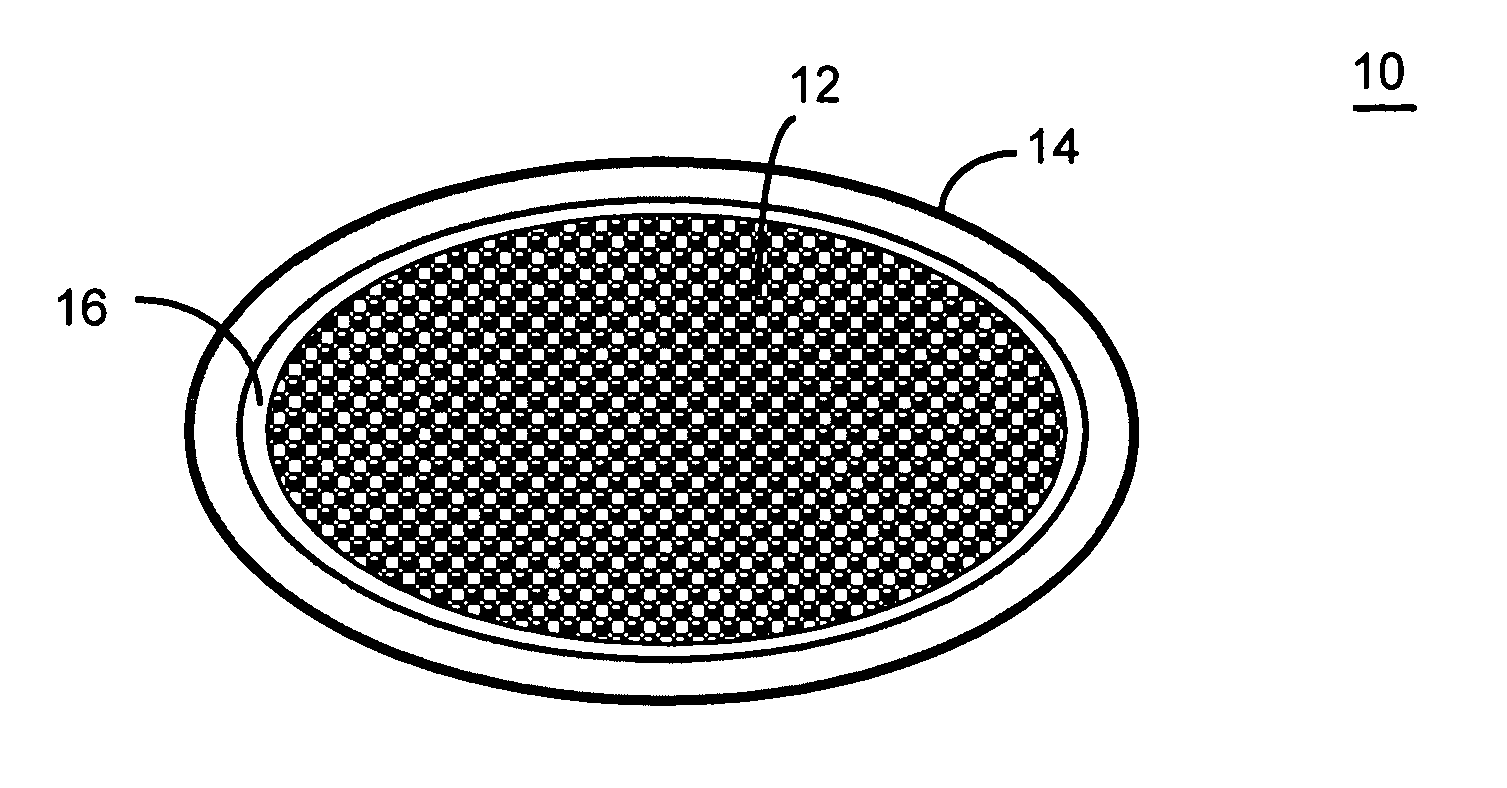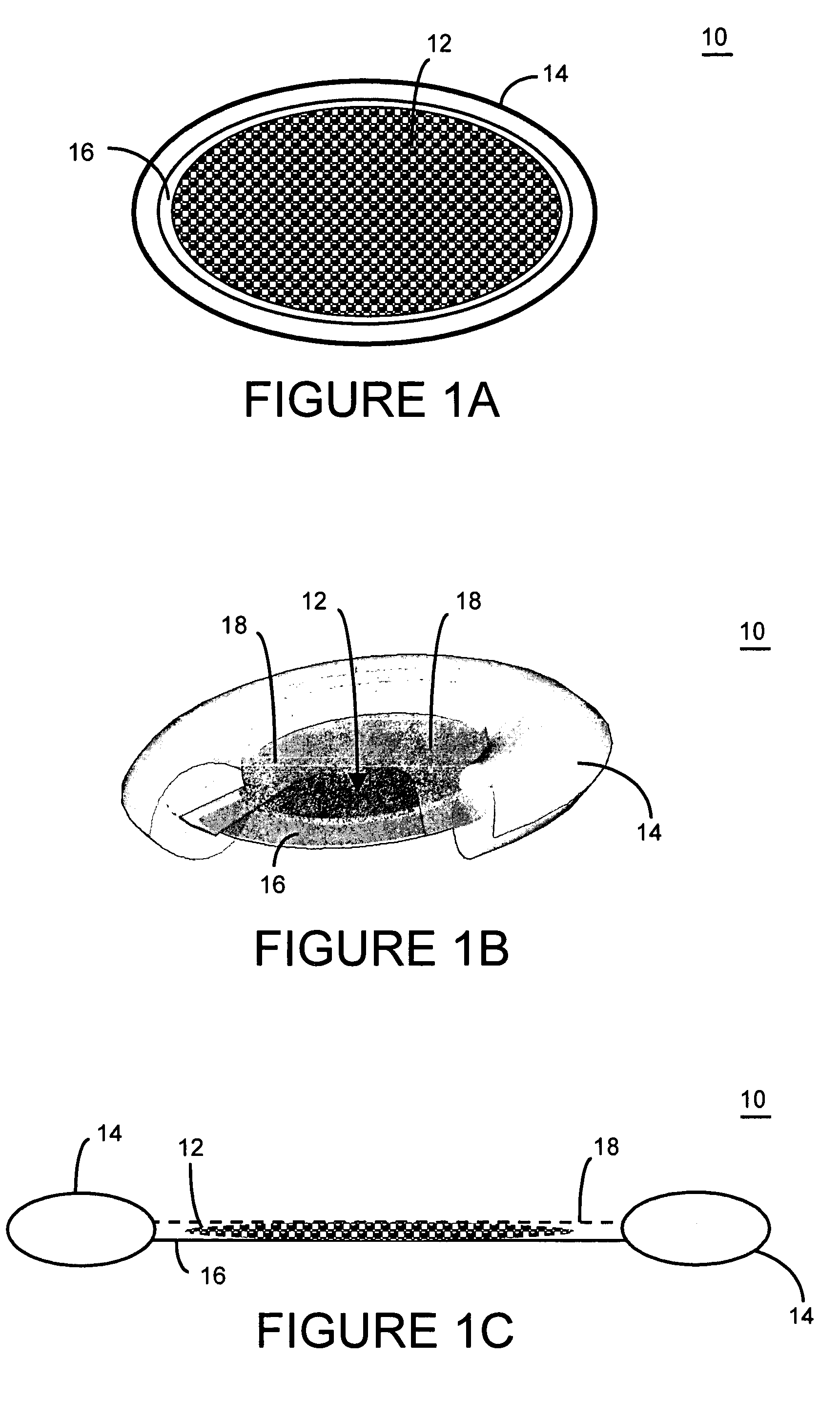Assay and method for analyte sensing by detecting efficiency of radiation conversion
a radiation conversion efficiency and analyte technology, applied in the direction of fluorescence/phosphorescence, instruments, analysis using chemical indicators, etc., can solve the problems of affecting the accuracy and stability of the glucose measurement, the approach is typically time-consuming and often quite painful, and the approach is not well-known for its measurement of glucose in interstitial fluid
- Summary
- Abstract
- Description
- Claims
- Application Information
AI Technical Summary
Benefits of technology
Problems solved by technology
Method used
Image
Examples
Embodiment Construction
[0029]There are many inventions described and illustrated herein. In one aspect, the present invention is a system, a device and a method for sensing the concentration of an analyte (e.g., glucose) in a fluid or matrix (e.g., the fluid in a bioreactor, a food or agricultural product, or animal body). In one embodiment, the analyte sensing device includes an analyte sensing component, including a plurality of radiation converting components that are in contact with the fluid or matrix and are capable of converting radiation of one or more wavelengths into radiation of one or more different wavelengths. The conversion efficiency(ies) of the radiation converting components is at least partially dependent on the concentration of an analyte within the fluid or matrix.
[0030]With reference to FIGS. 1A–1C, in one embodiment, analyte sensing device 10 includes at least one analyte sensing component 12 and housing 14. The analyte sensing component 12 is employed to measure, sense and / or detec...
PUM
| Property | Measurement | Unit |
|---|---|---|
| Concentration | aaaaa | aaaaa |
| Efficiency | aaaaa | aaaaa |
| Permeability | aaaaa | aaaaa |
Abstract
Description
Claims
Application Information
 Login to View More
Login to View More - R&D
- Intellectual Property
- Life Sciences
- Materials
- Tech Scout
- Unparalleled Data Quality
- Higher Quality Content
- 60% Fewer Hallucinations
Browse by: Latest US Patents, China's latest patents, Technical Efficacy Thesaurus, Application Domain, Technology Topic, Popular Technical Reports.
© 2025 PatSnap. All rights reserved.Legal|Privacy policy|Modern Slavery Act Transparency Statement|Sitemap|About US| Contact US: help@patsnap.com



